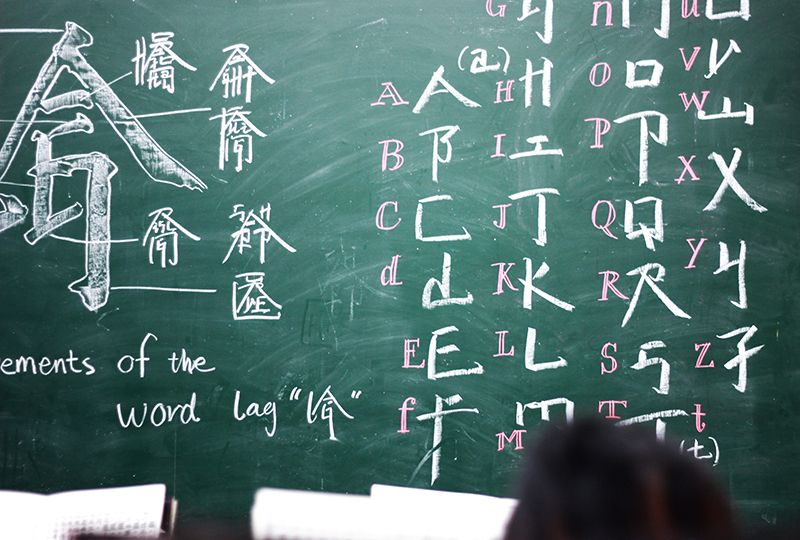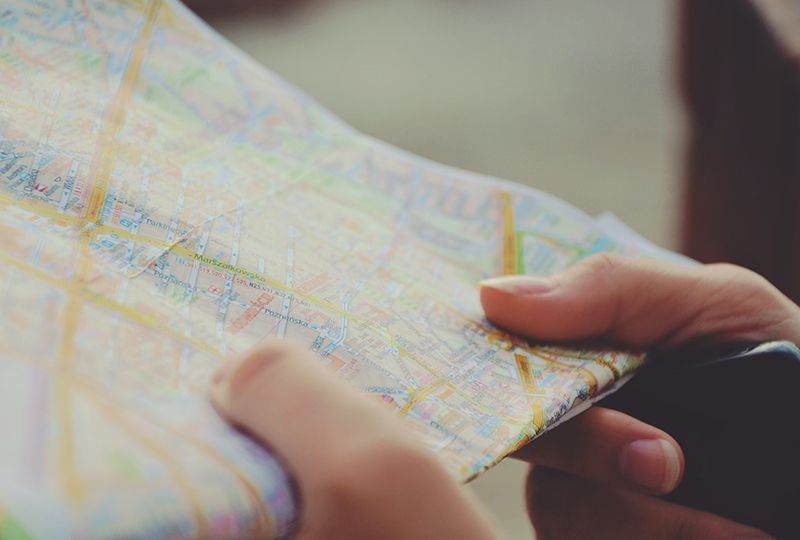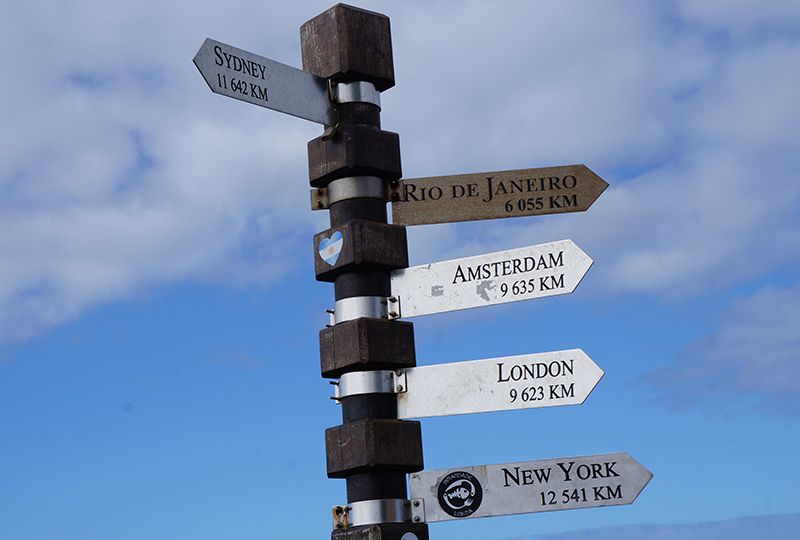Learn How to Understand and Give Directions in Chinese

Getting lost is a great way to discover a new place, but at some point we’ve all got places to be, and sometimes these places aren’t necessarily on a map or easy to find. Knowing how to get directions from the people around you is an essential survival skill, and sometimes leads to interesting encounters. Read on to learn how to use a few Chinese phrases and sentence patterns that will get you unlost and back on the right track.

Photo by on Jacek Dylag on Unsplash
Asking for Directions in Chinese: Start by Being Polite
The first few words out of your mouth have a huge effect on how you are perceived when you speak to someone. This is particularly true when you approach a stranger on the road, and they’ll make up their mind pretty fast as to whether they want to help you, ignore you, or walk away. You could try blurting out the name of the place you want to go and hoping for the best, but this probably won’t get you where you want. Luckily, there is a simple Chinese phrase for this situation: 不好意思 ( bù hǎo yì si ). Despite the literal translation being ‘not good meaning’, this versatile phrase is the perfect way to politely engage a complete stranger in conversation, or at the very least keep them interested. Flex your Mandarin muscles a little more by correctly addressing the person you’re hoping to get directions from. Add 請問 ( qǐngwèn / May I ask?) and you’ll sound like a natural. Now that you’ve got all the pieces, you’re ready to put them all together into a complete sentence.
不好意思先生, 請問, 你知道圖書館在哪裡嗎?
bù hǎo yì si xiānshēng, qǐngwèn, nǐ zhīdào túshū guǎn zài nǎlǐ ma?
Excuse me, sir. Do you know where the library is?

Photo by Randy Yip on Unsplash
Chinese Vocabulary to Get Directions
Now that you know how to ask where something is, you’ll need to be able to understand the directions you’re being given. It’s worth noting that saying or writing an address in Chinese is the opposite to how it’s done in most western languages. In English, for example, you start with the smallest thing and work up the the largest:
street number > street name > town/city > county > state/province > country
but in Chinese you go large to small:
country > state/province > county > town/city > district > street name > street number
District ( 區 / qū )
Most large cities are divided up into districts, some of which are so big they seem like cities unto themselves. The borders between these districts are rarely marked, and you can pass from one to another without realizing it. Knowing how to say which district you want to visit will start you off on the right foot.
Cardinal Directions
A good sense of direction goes a long way when you’re traveling, and if you’re comfortable using cardinal directions it’ll pay off. Just as in English, these words can be combined, though you’ll notice east and west come first, as opposed to English where north and south are prioritized.
north ( 北 / běi )
south ( 南 / nán )
east ( 東 / dōng )
west ( 西 / xī )
northeast ( 東北 / dōngběi ), northwest ( 西北 / xīběi)
southeast ( 東南 / dōngnán), southwest ( 西南/ xīnán)
area ( 部 / bù )
This word is often used along with one of the cardinal directions or a combination of them to indicate a general location within a country, city or area.
Where is the restroom? ( 衛生間在哪裡? / wèishēngjiān zài nǎlǐ? )
It’s in the northeast part of the park. ( 在公園東北部. / zài gōngyuán de dōngběi bù. )
Left ( 左 / zuǒ ) and right ( 右 / yòu ) are also essential vocabulary if you need directions. They’re often combined with the word for ‘side’, ( 邊 / biān ), to indicate where something is in relation to another place.
The movie theater is to the left of the supermarket.
( 電影院在超級市場的左邊. / diànyǐngyuàn zài chāojí shìchǎng de zuǒbiān. )
邊 ( biān ) can also be used with the cardinal directions.
Learn Streets, Roads, and Sections in Chinese
As mentioned above, you always give the name of the street or road first, then the number when you’re giving an address. Unlike street names in English where road, street, and lane are used somewhat interchangeably, they have a more specific meaning in Chinese.
avenue ( 大街 / dàjiē ) or ( 大路 / dàlù )
Multiple lanes on each side. Think of a highway but through the middle of the city.
road ( 路 / lù )
Still multiple lanes, but more akin to a normal city street.
street ( 街 / jiē )
Smaller than a road, and often barely wide enough for two cars to pass by each other.
Where is the bakery? ( 麵包店在哪裡 / miànbāo diàn zài nǎlǐ? )
225 Jhongshan Road. ( 中山路 225號 / Zhōngshān lù 225 hào. )
lane/alley ( 巷 / xiàng )
These are sometimes so small that they don’t even allow for a car to drive down them, and they’re often given a number like a building instead of a unique name.
Where is the cafe? ( 咖啡館在哪裡? / kāfēi guǎn zài nǎlǐ? )
13 Lane 315 Linsen Road. ( 林森路315巷13號 / lín sēn lù 315 xiàng 13 hào)
However, this can get complicated when the road in question is divided up into subsections and the address numbers get reset on each section. This can be done in a few different ways, and you may see instances of each in the same city or even the same neighborhood. This is done mostly for larger avenues and roads that cover a large distance.
Roads can be divided into sections ( 段 / duàn), numbers, and cardinal directions as they cross the city. See below for an example of each.
236 Hai An Road Section 2 ( 海安路二段236號 / Hǎi'ān lù èr duàn 236 hào )
68 Zhongzheng 3rd Road ( 中正三路68號 / Zhōngzhèng sān lù 68 hào )
179 North Chongqing Road ( 重慶北路179號 / Chóngqìng běi lù 179 hào)

Photo by Sylwia Bartyzel on Unsplash
Figure Out Directions Through Location Vocabulary
in/at/on ( 在 / zài )
This is another word that you’ll use dozens of times a day for multiple reasons, and you’ll hear it a lot when you talk about where things are. It can be used alone or in conjunction with other words to specify a location. The phrases below usually give the location of one place in reference to another.
Where is the gym? ( 健身房在哪裡?/ jiànshēnfáng zài nǎlǐ? )
Next to the post office. ( 在郵局旁邊 / zài yóujú pángbiān. )
in front of ( 在... 前面 / zài... qiánmiàn )
behind ( 在... 後面 / zài... hòumiàn )
in the middle ( 在... 中間 / zài... zhōngjiān )
next to ( 在... 旁邊 / zài... pángbiān )
near ( 在... 靠近 / zài... kàojìn )
above ( 在... 之上 / zài... zhī shàng )
below ( 在... 之下 / zài... zhī xià )
central ( 在… 中央 / zài… zhōngyāng )
at the next ( 在下一個 / zàixià yīgè)
at the next next ( 在下下個 / zàixiàxià gè)
The words below serve as essential navigation points, and they're used with the words above to give instructions.
block ( 街段 / jiē duàn )
intersection ( 路口 / lùkǒu )
traffic light ( 紅綠燈 / hónglǜdēng )
bridge ( 橋 / qiáo )
highway ( 高速公路 / gāosù gōnglù )

Photo by Joshua Hoehne on Unsplash
Chinese Useful Verbs Point to Directions
turn ( 轉 / zhuǎn ) - use with left and right ( 左轉 / 右轉 )
go/head ( 往 / wǎng) - use with north, south, east, and west ( 往北, 往南, ...)
go straight ( 直行 / zhíxíng ) or ( 直走 / zhí zǒu ) - Go straight at the next intersection. (在下個路口直走 / zàixià gè lùkǒu zhí zǒu )
go past/by/through ( 過去 / guòqù) - Go past the park. ( 過去公園 / guòqù gōngyuán )

Photo by Andrik Langfield on Unsplash
How Far is the Metro Station? ( 地鐵站有多遠?/ Dìtiě zhàn yǒu duō yuǎn?)
Once you’ve gotten your directions, you may want to check on the distance before you start walking, especially if you’re unsure exactly how far you have to go. Depending on the answer, you might want to consider alternative means of travel.
How far? ( 多遠? / duō yuǎn? )
very near ( 很近 / hěn jìn )
not far ( 不遠 / bù yuǎn )
not too far ( 不太遠 / bù tài yuǎn )
very far ( 非常遠 / fēicháng yuǎn )
too far ( 太遠 / tài yuǎn )
If you’re on foot and get either of the last two answers, you may want to ask a follow-up question:
Can I walk there? ( 我可以走到那裡嗎?/ wǒ kěyǐ zǒu dào nàlǐ ma? )
If the answer is ‘no’, save yourself the blisters and jump in a cab.

Photo by Bruno Wolff on Unsplash
Giving Directions in Chinese: Using the Imperative/Command Form
Once you’re comfortable getting directions you may find yourself able to return the favor to a wayward pedestrian. Similar to English, Chinese often uses the imperative (also known as the command form) when giving directions. Pronouns (I, you, etc…) are thrown out the window and replaced with time-order words. Fortunately, there are only two that you really need:
first ( 先 / xiān )
then (然後 / ránhòu)
Use them at the beginning of a sentence exactly as you would in English.
First, go to that traffic light and turn right. Then, walk two blocks. The bookstore is on the left.
先去那個紅綠燈和右轉. 然後走兩個街區. 書店在左邊.
xiān qù nàgè hónglǜdēng hé yòuzhuǎn . ránhòu zǒu liǎng gè jiēqū. shūdiàn zài zuǒbiān.

Photo by Andrea Piacquadio on Pexels
Don’t Fake It Because You Won’t Make It.
When in doubt, it’s best just to be honest and admit you don’t know how to tell this person you don’t know how to get where they want to go.
Sorry. I don’t know. ( 對不起. 我不知道. / duìbùqǐ. wǒ bù zhīdào. )
The same is true if you didn’t understand the directions you were given, though here you have a few options. You can politely ask for the directions to be repeated ( 請你再說一遍 / qǐng nǐ zàishuō yībiàn ), or you can say thank you, head off in the general direction of where you want to go and try your luck with someone else.
Good luck and happy travels!
Title Photo by William Fortunato from Pexels
